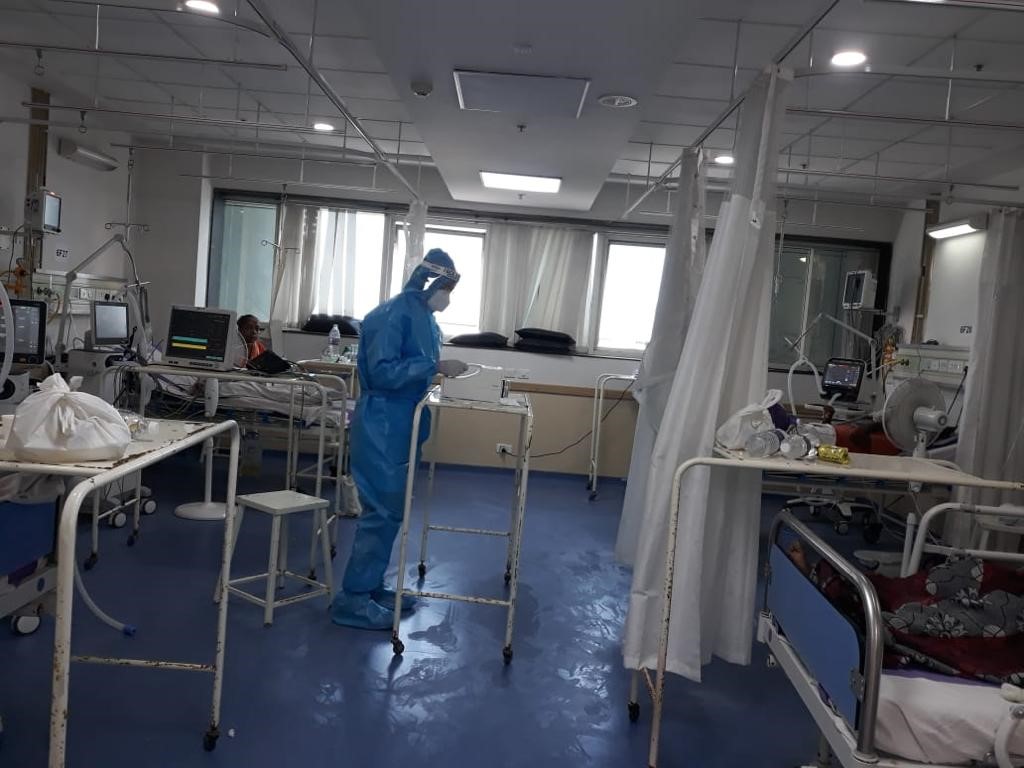
Back in 2020, when SARS-CoV-2 was thought to be spread mainly through contact with the infected individuals, CCMB researchers, along with scientists from IMTech, initiated a study to understand the transmission characteristics of SARS-CoV-2 through the air in indoor and outdoor settings. We analyzed air samples from different areas in hospitals like COVID wards, ICUs, doctors’ rooms, corridors, general wards, PPE doffing areas and from rooms occupied by COVID patients. We also analysed air from houses of home quarantined COVID patients. We frequently detected SARS-CoV-2 nucleic acids in the air around COVID patients. Our results showed that the probability of picking up the viral nucleic acids in air was higher when a larger number of COVID patients were present in the premise. In hospital settings, we could detect viral nucleic acids mostly in COVID care areas, with no specific predilection towards ICU or non-ICU.
To understand the infectivity of SARS-CoV-2 through air, we used the air samples to infect Vero cells (a known cell line host for SARS-CoV-2) in culture and observed that SARS-CoV-2 collected through air sample could infect Vero cells in culture and we could also establish a viral culture through the air sample.
Based on the findings, we had issued an advisory for mitigation of SARS-CoV-2 transmission through air.
Publication:
Detection of SARS-CoV-2 in the air in Indian hospitals and houses of COVID-19 patients